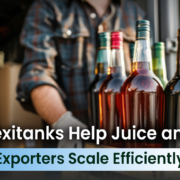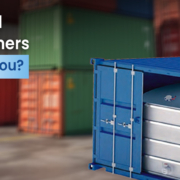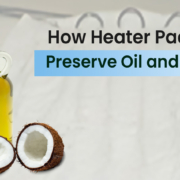Why Flexitanks Are Ideal for Bulk Wine and Juice Shipping
Bulk Wine Shipping: Modern Needs Demand Smarter Solutions
The global wine and juice industries are evolving. With rising international demand and a growing focus on cost optimisation, logistics managers and exporters are seeking reliable and scalable bulk wine shipping methods that preserve product integrity. Traditional options like barrels, bottles, and IBCs are inefficient, unhygienic, and unsustainable.
Flexitanks are revolutionising bulk wine transportation, providing a clean, cost-effective, and safe method for moving large volumes of non-carbonated beverages worldwide. From boutique wineries to large juice producers, businesses are choosing fluid flexitanks to streamline their supply chain without compromising on quality.
Challenges in Traditional Juice and Wine Shipping
Wine and juice are delicate products. They are both sensitive to temperature, oxygen exposure, and contamination. Traditional packaging methods like glass bottles and steel drums often lead to:
- Higher freight costs due to lower payload capacity
- Increased risk of breakage or leakage
- Oxygen contamination is impacting aroma and taste
- Intensive handling and labour costs
- Excess packaging waste
As the demand for bulk export grows, the industry needs smarter wine transport solutions that ensure purity, efficiency, and compliance with food safety standards.
Why Flexitanks Work for Bulk Wine and Juice Shipping
✅ 1. High Payload, Lower Cost
One of the most compelling advantages of flexitanks is their ability to carry up to 24,000 liters of liquid in a single 20-foot container. This results in 30–40% more product per shipment compared to drums or IBCs. More product per trip means reduced freight cost per litre, a significant win for exporters.
✅ 2. Food-Grade Safety and Hygiene
Flexitanks from Fluid Flexitanks are constructed using multi-layered virgin polyethylene, compliant with FDA, BGA, and EC standards for food-grade products. These wine transport tanks are single-use, ensuring there’s zero risk of cross-contamination from previous cargo.
✅ 3. Reduced Packaging Waste
Flexitanks eliminate the need for bottles, crates, or heavy secondary packaging. After use, they can be fully recycled. This supports sustainability goals while lowering handling and disposal costs — an important consideration for environmentally-conscious brands.
✅ 4. Preservation of Product Quality
Flexitanks are airtight and oxygen-free, ensuring that the product doesn’t oxidize during transit. This is particularly important for wines, juices, and concentrates, which can lose their flavour or freshness if exposed to air or contaminants.
✅ 5. Faster Loading and Discharge
Flexitanks simplify operations at both ends of the logistics chain. They can be filled quickly using gravity or pump systems and unloaded efficiently without extensive manpower. For high-volume shippers, this translates to lower port charges and quicker turnaround.
Wine Transport Tanks Designed for Global Trade
Fluid Flexitanks offers wine transport tanks engineered specifically for bulk wine and juice shipping. Each tank is tested for strength, compatibility, and hygiene. Optional heater pads are available to ease discharge in cold-climate ports where juices or tallow-like liquids might thicken.
Exporters shipping to the US, EU, and Asia have reported major improvements in efficiency, product quality, and freight savings using Fluid Flexitank systems.
Applications in Wine and Juice Supply Chains
Flexitanks are now widely used across:
- Red and white wine bulk exports
- Grape must and concentrate shipping
- Tropical fruit juices like mango and guava
- Citrus concentrates and Not from Concentrate juices
- Organic or preservative-free beverages
They are ideal for long-haul transportation by sea, rail, or road. Whether you’re a vineyard in Italy or a juice producer in Maharashtra, flexitanks make global reach simpler.
Make Every Shipment Efficient – Choose Fluid Flexitanks
If you’re in the business of wine or juice exports, it’s time to rethink your shipping strategy. Flexitanks are not just containers; they are a logistics upgrade.
Fluid Flexitanks provides bulk wine transportation solutions that offer better hygiene, reduced costs, and unmatched reliability. From quality control to on-site support, our team ensures you have the right tank for every product and destination.
Reach out to our experts today and find out how Fluid Flexitanks can improve your wine or juice export process, one shipment at a time.










